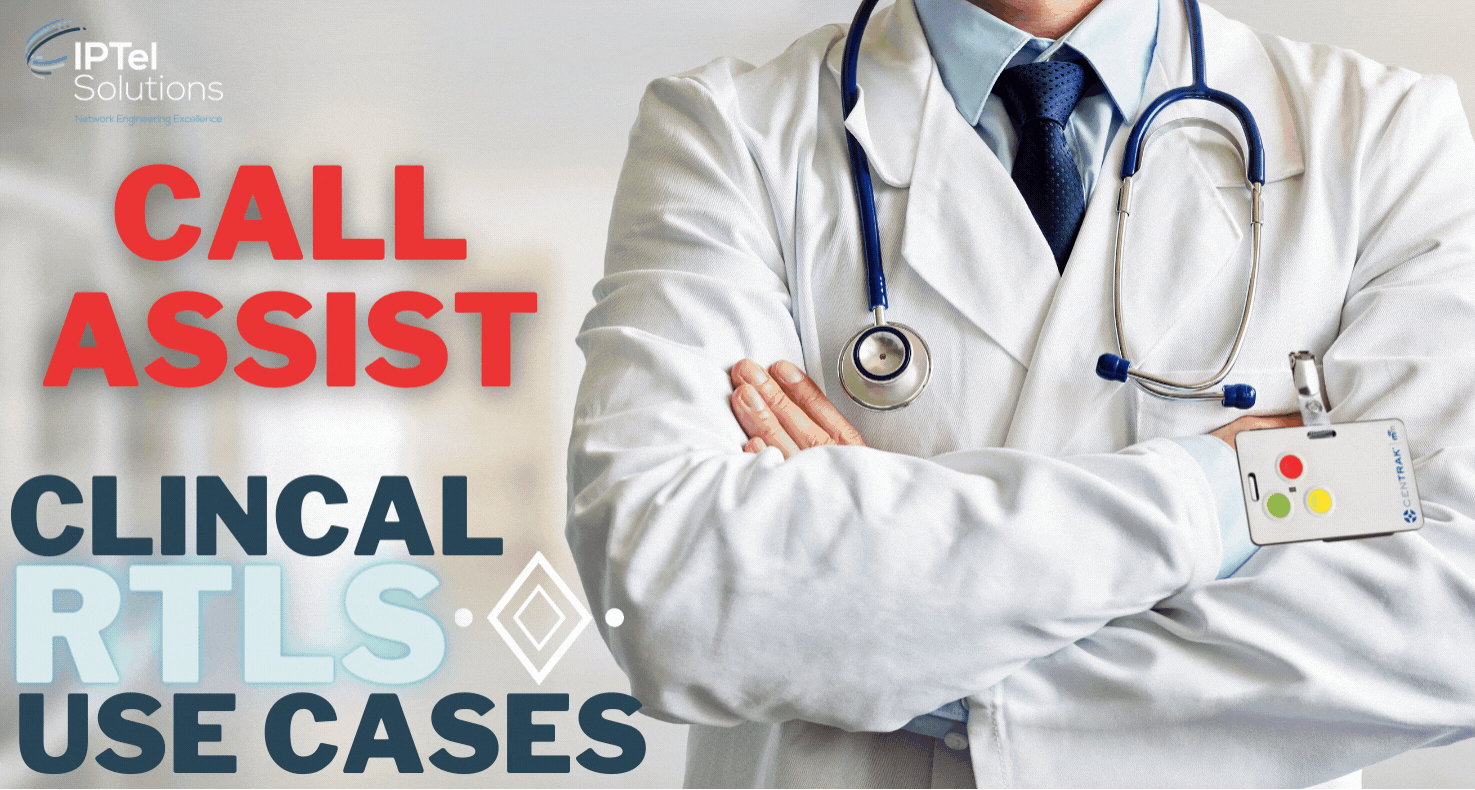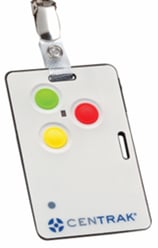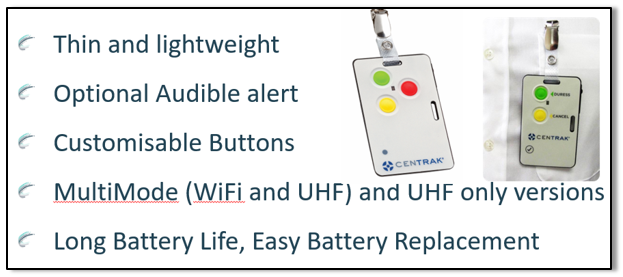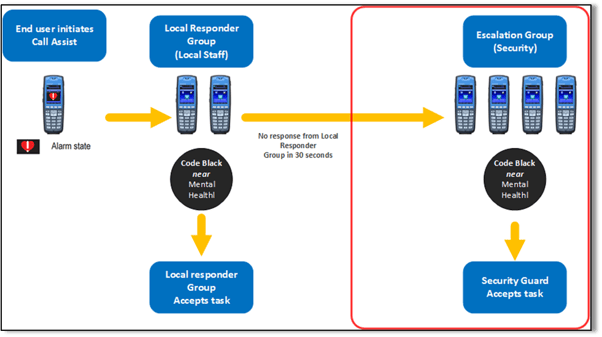Real Time Location Services (or RTLS for short) describes a range of technologies used to track and locate people and equipment. Often there is a task / messaging engine overlaid, in order to bring the technology to life and integrate it into the operational processes.
In this blog, we'll take a look at the Call Assist use case.

RTLS use case: Call Assist
In this blog, we'll mix it up, with a look at some of the RTLS components (tags and phones being quite common) and the processes behind delivering the Call Assist application.
In a hospital, there are many occasions when staff need to request help from a colleague - this could be:
- Request help from a porter to move a bed
- Request assistance to move a patient between beds
- Escalation of an issue, and require second person to help
- Physical or verbal threats
There's a wide range of reasons that clinical staff might request some help - the technology to carry a smart tag and simply press a button to request this help, can be a major time saver in a clinical environment.
ASSOCIATED BLOGS:
Call Assist
Staff can find themselves in difficult or alarming situations in the course of their duties and need to call for assistance.
This may be nurses in the ED, or staff at the MHU. There are other vulnerable members of staff often overlooked, such as cleaning staff whom often work unsocial hours in areas of the hospital with few other people.
Sometimes this is because they suspect a patient or relative is likely to become violent, or a situation is arising in which they need support from other staff.
ASSOCIATED BLOGS:
CenTrak Tags
There are a number of manufacturers of the tags (and the applications that support the processes). We'll take a look at one of these manufacturers in this blog, which is CenTrak.
CenTrak takes an interesting approach to location tags - they can use both Wi-Fi and the CenTrak proprietary 900MHz overlay network. This provides the option of a 'belt and braces' approach of taking in information from two separate radio networks, as well as tee integration with beacons, such as the infrared beacons.
As a side note, beacons are typically used to provide an additional input in the location calculation - this is very useful when you're looking at use cases which MUST have specific room accuracy, such as nursecall cancellation or in mental health units.
CenTrak Tags come in two types:
As mentioned above, you can buy CenTrak tags to support just 900Mhz, or versions that support both 900Mhz and Wi-Fi:
- 900 MHz only: Dedicated network to communicate with the CenTrak system, and work in beacon based areas
- MultiMode: Can support both Wi-Fi and 900MHz for complete flexibility - use Wi-Fi location most places and CenTrak beacon based location where high accuracy is really important
For a bit more information on the MultiMode option, see the CenTrak website.
There are a wide range of tags, from a fridge temperature monitoring device, tags to track equipment, through to tags to help locate wandering patients.
One type of tag is worn by staff - the Staff Tag - let's look at this next.
ASSOCIATED BLOGS:
Staff Tags
There's a range of tags available - for the Call Assist use case, we're going to look at the staff tag.

As can be seen from the image on the left, these are worn along with ID tags on a lanyard, belt loop, or clipped to clothing and provide the staff with an emergency call button.
The two (or three) buttons can be programmed as required - typically the red button is a call assist button.
The other buttons can be programmed for whatever function you want - request a bed be cleaned, request for a porter, a non-urgent request for help, etc.
The tags have a few features to note - the primary one though is that they're thin and light, so can be worn on the lanyard. Here's a quick run down:

Let's take a look at an alternate device, which is carried by a lot of staff - Wi-Fi phones.
ASSOCIATED BLOGS:
Wi-Fi Phones
Tags are not the only way to request help. Many staff carry Wi-Fi phones, so makes sense for these to also be able to provide the same functionality.
Incidents can be raised on Wi-Fi phones with programmable buttons - this provides a method of providing those handset users with a way to raise a call.
The choice is tags or Wi-Fi phones.
Tags can also be used with beacons for zone certainly (and are also much less expensive than phones), however the flexibility to use either for call assist provides additional options for the system.
ASSOCIATED BLOGS:
Task Flows
Task flows are a fundamental concept in the system design. Taking the people, tasks and assets together and doing something with the output is the point of the system.
In this case a phone is used to raise the call (it could also be a tag). The flow then is sent to the first line responders, who could be local staff based nearby. If anyone in this group accepts, the task flow stops there.
If no one in the local responder group accepts the task in a predetermined period of time, the task is escalated to the next level and send to the security group. The security guards them receive the task and can accept.
A rough flow diagram of the process is shown below:

ASSOCIATED BLOGS:
Clinical RTLS Use Cases - Call Assist: Summary
Call Assist in hospitals is extremely valuable to the employees and to patients.
Allowing for Alarms to be raised faster, call assist is one of the many ways that RTLS allows for hospitals to take better care of patients and help their employees stay safe.
From this blog, you can see that you can use multiple ways to raise the alarm - personal staff tags, or Wi-Fi phones are in common use, and can also then be used for other use cases too.
ASSOCIATED BLOGS:




.gif)
